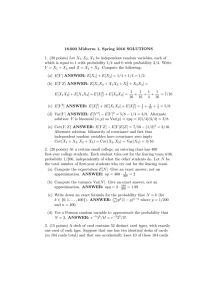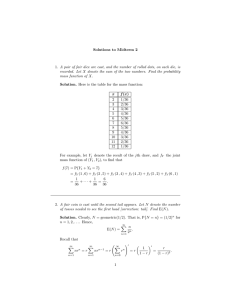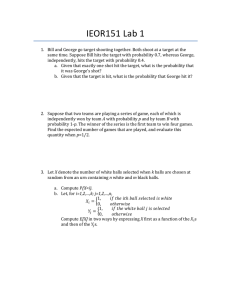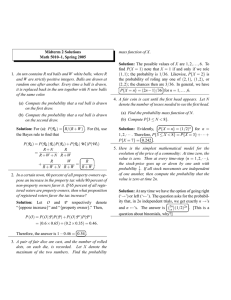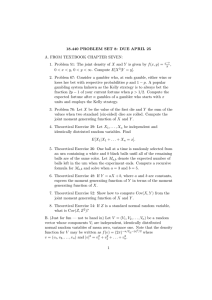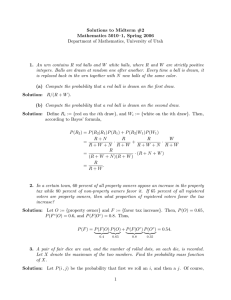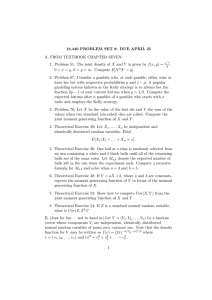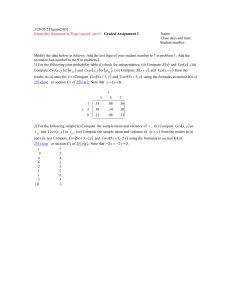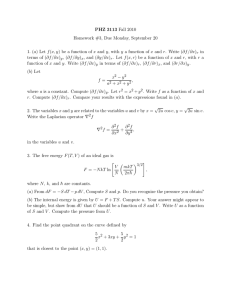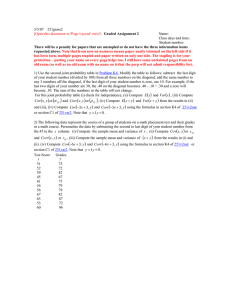18.600 Midterm 1, Spring 2016: 50 minutes, 100 points
advertisement
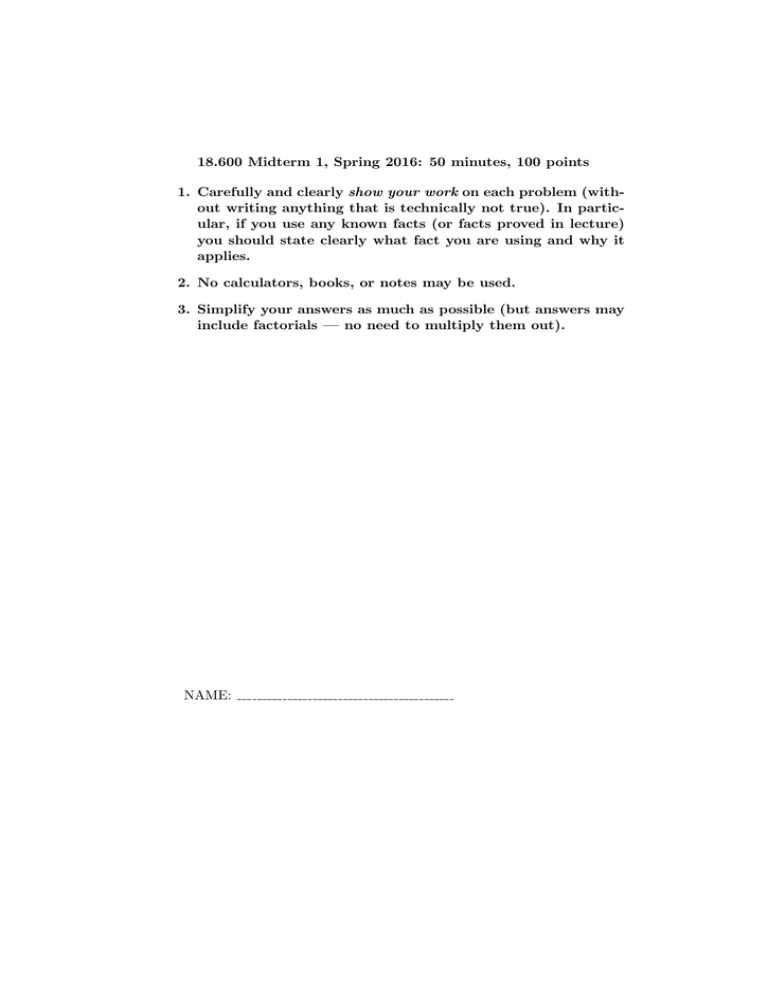
18.600 Midterm 1, Spring 2016: 50 minutes, 100 points
1. Carefully and clearly show your work on each problem (without writing anything that is technically not true). In particular, if you use any known facts (or facts proved in lecture)
you should state clearly what fact you are using and why it
applies.
2. No calculators, books, or notes may be used.
3. Simplify your answers as much as possible (but answers may
include factorials — no need to multiply them out).
NAME:
1. (20 points) Let X1 , X2 , X3 be independent random variables, each of
which is equal to 1 with probability 1/4 and 0 with probability 3/4. Write
Y = X1 + X2 and Z = X2 + X3 . Compute the following:
(a) E[Y ]
(b) E[Y Z]
(c) E[Y 2 ]
(d) The variance Var[Y ].
(e) The covariance Cov(Y, Z). (Recall the definition:
Cov(Y, Z) = E[Y Z] − E[Y ]E[Z].)
2. (20 points) At a certain small college, an entering class has 400
first-year college students. Each student tries out for the fencing team with
probabiity 1/200, independently of what the other students do. Let N be
the total number of first-year students who try out for the fencing team.
(a) Compute the expectation E[N ]. Give an exact answer, not an
approximation.
(b) Compute the variance Var[N ]. Give an exact answer, not an
approximation.
(c) Write down an exact formula for the probability that N = k (for
k ∈ {0, 1, . . . , 400}).
(d) Use a Poisson random variable to approximate the probability that
N = 3.
3. (15 points) A deck of card contains 52 distinct card types, with exactly
one card of each type. Suppose that one has two identical decks of cards
(so 104 cards total) and that one accidentally loses 10 of these 104 cards
(chosen uniformly from the set of all possible 10-card subsets) so that one
now has only 94 cards.
What is the probability that it is possible to form a single complete deck of
cards from the 94 cards remaining? In other words, what is the probability
that the set of 94 remaining cards includes at least one card of each of the
52 types? (Note: this is equivalent to the probability that the set of 10 lost
cards includes at most one card of each type.)
4. (15 points) Seven people toss their hats in a bin and have them
randomly shuffled and returned, one hat to each person. Let N be the
number of people who get their own hat back. Compute the following:
(a) The expectation E[N ].
(b) The probability P (N = 5).
(c) The conditional probability P (N = 7|N ≥ 5).
5. (10 points) An urn contains 10 black balls and 10 white balls. If a
collection of 8 balls is chosen uniformly at random from the urn, what is
the probability that 4 of them are black and 4 of them are white?
6. (20 points) Let X be the number on a standard die roll (assuming
values in {1, 2, 3, 4, 5, 6} with equal probability). Let Y be the number on
an independent roll of the same die. Compute the following expectations:
(a) E[X]
(b) E[X 2 ]
(c) E[5X 7 − 5Y 7 + 5]
(d) E[XY ]
